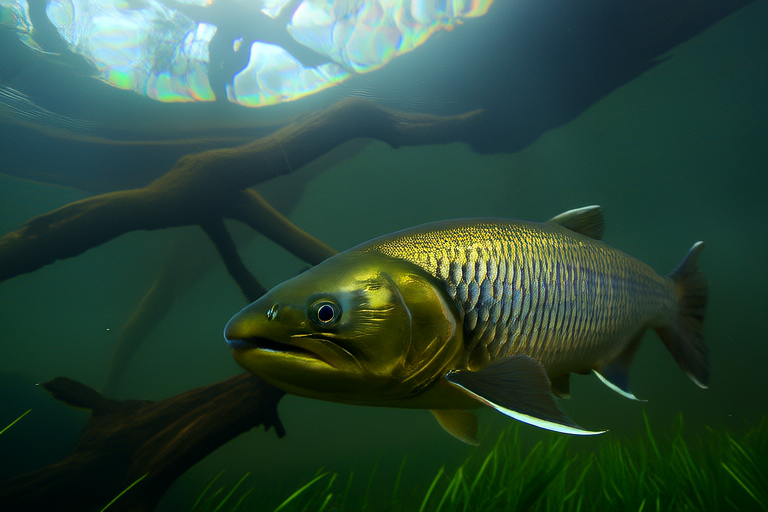Tankmates Or Solitary Kings? Caring For Your Arowana
Arowanas are majestic fish that have captivated the hearts of many aquarists. Known for their unique appearance and intriguing behavior, these freshwater giants can be a rewarding addition to your aquarium. However, they come with specific requirements that must be met to ensure their health and well-being. This article delves into the complexities of caring for arowanas, exploring their behavior, tank compatibility, dietary needs, habitat setup, and care tips. We will also compare the pros and cons of keeping arowanas with tankmates versus solitary.
Understanding Arowana Behavior
Arowanas are known for their aggressive nature and territorial behavior. They are predatory fish that naturally hunt in the wild. Their long bodies and powerful jaws make them formidable hunters, capable of leaping out of the water to catch prey. In captivity, this behavior can pose challenges when it comes to choosing tankmates. Arowanas are generally solitary by nature, preferring to be the sole inhabitants of their tank.
Despite their aggression, arowanas can exhibit fascinating behaviors. They are known to be curious and interactive with their environment. Some aquarists have reported their arowanas recognizing them and even responding to feeding times. Understanding and respecting their natural instincts is key to providing a happy and healthy life for your arowana.
Tank Compatibility: Pros and Cons
Pros of Keeping Arowanas With Tankmates
Some aquarists choose to keep arowanas with compatible tankmates for social interaction and to enhance the visual appeal of their aquarium. Compatible species should be large enough to avoid being seen as prey and peaceful enough to coexist without conflict. Examples of potential tankmates include large catfish, plecos, and other robust fish species. These tankmates can provide stimulation and companionship, enriching the arowana’s environment.
However, it is crucial to research thoroughly before introducing any tankmates. The wrong choice can lead to aggression, injury, or even death. It is recommended to observe the behavior of both the arowana and potential tankmates closely during the initial period to ensure compatibility.
Cons of Keeping Arowanas With Tankmates
The primary concern with keeping arowanas with tankmates is the risk of aggression. Arowanas are territorial and may view smaller or weaker fish as prey. Even seemingly peaceful tankmates can become stressed or injured due to the constant presence of a dominant predator. Additionally, the size and space requirements of arowanas necessitate a large tank, which can be costly and challenging to maintain.
For some aquarists, the decision to keep arowanas solitary is a safer and more ethical option. It ensures the well-being of all fish involved and allows for a more focused care routine dedicated solely to the arowana’s needs.
Dietary Needs
Arowanas are carnivorous and require a diet rich in protein. In the wild, they feed on insects, small fish, and crustaceans. In captivity, a balanced diet should include high-quality pellets, frozen foods like bloodworms and brine shrimp, and occasional live food such as feeder fish. It is important to vary their diet to ensure they receive all necessary nutrients.
Feeding arowanas can be an exciting experience, as they are known for their impressive leaps out of the water to catch food. It is essential to establish a consistent feeding schedule and monitor their eating habits to prevent overfeeding, which can lead to health issues.
Habitat Setup
Arowanas need a spacious and well-maintained habitat to thrive. The minimum tank size for a single arowana should be at least 150 gallons, but larger tanks are preferred. The tank should have a tight-fitting lid to prevent the fish from jumping out, as they are known for their acrobatic abilities.
Water quality is crucial for arowanas. They prefer slightly acidic water with a pH range of 6.0 to 7.0 and a temperature between 78°F and 84°F. Regular water changes and proper filtration are essential to maintaining optimal conditions. Decorations should be sturdy and safe, avoiding sharp edges that could injure the fish.
Providing hiding spots and open swimming areas is also important. Plants, rocks, and driftwood can create a stimulating environment while ensuring the arowana has ample space to swim freely.
Care Tips
Regular maintenance is key to keeping your arowana healthy. Monitor water parameters closely and perform partial water changes weekly. Clean filters and decorations regularly to prevent the buildup of harmful substances.
Observe your arowana’s behavior for signs of stress or illness. Common symptoms include loss of appetite, lethargy, or visible injuries. Prompt action is necessary if you notice any issues, consulting a veterinarian specializing in exotic fish if needed.
Patience and consistency are vital when caring for arowanas. Establishing a routine and providing a stable environment will help your arowana feel secure and comfortable.
Conclusion
Whether you choose to keep your arowana with tankmates or as a solitary king, understanding its needs and providing a suitable environment is paramount. By considering the pros and cons of each approach and adhering to best practices in feeding, habitat setup, and care, you can ensure your arowana leads a fulfilling and healthy life. Arowanas are truly remarkable creatures that offer a unique and rewarding experience for those willing to take on the challenge of their care.
